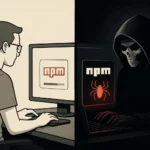A significant security vulnerability in Windows’ defense mechanisms has been exposed through a newly developed tool called Defendnot. This sophisticated utility demonstrates how attackers could potentially disable Microsoft Defender by exploiting an undocumented Windows Security Center (WSC) API, effectively registering a phantom antivirus product without actually installing any legitimate security software.
Technical Analysis: How Defendnot Bypasses Windows Security
The tool’s primary mechanism leverages undocumented WSC API functionality to simulate the installation of a legitimate antivirus solution. This exploitation takes advantage of Windows’ built-in behavior, which automatically deactivates Microsoft Defender when it detects another antivirus product to prevent potential conflicts between security solutions. The most concerning aspect is the tool’s ability to circumvent Windows’ native security measures without requiring elevated privileges.
Advanced Evasion Techniques and System Integration
Defendnot employs sophisticated methods to bypass core Windows security features, including Protected Process Light (PPL) and digital signature verification. The tool achieves this by injecting a specialized DLL into the trusted Taskmgr.exe system process, allowing it to register the fake antivirus using Microsoft-signed process credentials. This approach demonstrates a concerning weakness in Windows’ security architecture.
Customization and Persistence Capabilities
The tool incorporates a configuration loader utilizing a ctx.bin file, enabling various customization options including:
– Custom antivirus name spoofing
– System logging deactivation
– Detailed operational logging
– Automatic startup persistence through Windows Task Scheduler
These features make Defendnot particularly versatile and potentially dangerous in malicious scenarios.
Security Implications and Microsoft’s Response
Defendnot represents an evolution from its predecessor, no-defender, which was removed from GitHub following a DMCA complaint. The new implementation uses original code to avoid copyright issues while maintaining its effectiveness. Microsoft has responded by updating Defender to detect and quarantine Defendnot as Win32/Sabsik.FL.!ml, highlighting the ongoing cat-and-mouse game between security providers and potential threats.
This security development underscores the critical importance of maintaining updated antivirus definitions and security software. Organizations and individuals should regularly monitor their security solutions’ status and implement comprehensive defense strategies beyond relying solely on Windows Defender. The discovery of such vulnerabilities emphasizes the need for continuous security awareness and proactive protection measures in an ever-evolving threat landscape.






